Mitral Stenosis (MS)
Mitral Stenosis (MS) is a form of valvular heart disease characterized by the narrowing of the mitral valve orifice. The most common cause of mitral stenosis is rheumatic fever, though the stenosis typically does not become clinically relevant until several decades later.
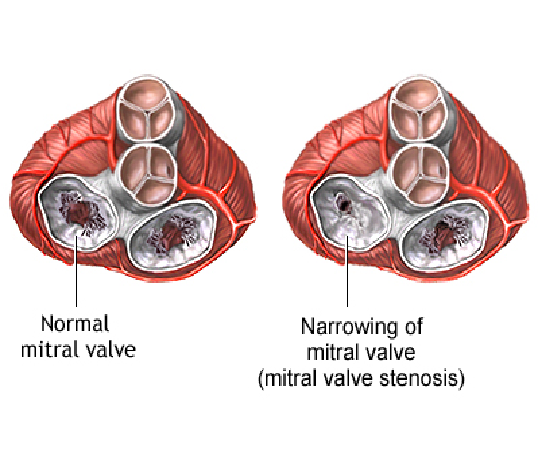
Mitral Regurgitation (MR)
Mitral regurgitation (MR) also known as mitral insufficiency or mitral incompetence, is a common heart condition that occurs when the mitral valve doesn’t close properly:
Prevalence Mitral regurgitation is the most common type of heart valve disease in the U.S., especially among people over the age of 65.The mitral valve is located on the left side of the heart and controls the flow of blood from the left atrium to the left ventricle. When the mitral valve doesn’t close properly, blood flows backward into the left atrium from the left ventricle.
Symptoms of Mitral Regurgitation (MR)
Cough
Fatigue, exhaustion, and lightheadedness
Rapid breathing
Palpitations or a rapid heartbeat
Shortness of breath that increases with activity and when lying down
Waking up an hour or so after falling asleep because of trouble breathing
Causes of Mitral Regurgitation (MR)
Mitral regurgitation can be caused by a number of things, including
Congenital conditions,
Rheumatic fever, and
Degenerative changes in the valve.
Treatment for Mitral Regurgitation (MR)
Treatment options include
Valve repair, Valve replacement, or Surgical options that can be done through a catheter.
Valve repair is generally preferred over valve replacement.
Treatment for Mitral Stenosis (MS)
Medical therapy
Can help with symptoms, but doesn’t improve long-term outcomes.
Medications may be
Diuretics to relieve congestion
Beta-blockers and calcium channel blockers to help with exertional symptoms
Aspirin to help treat clotting risk
Warfarin to help treat atrial fibrillation
Percutaneous mitral balloon valvuloplasty
A catheter-based procedure that uses a balloon to widen the mitral valve. This procedure is often used for less damaged valves, and may need to be repeated later.
Surgical Management
Repairing or replacing the mitral valve. Surgery can be performed using traditional open-chest surgery or minimally invasive techniques.
Replacement valves can be made from mechanical parts or tissue. Mechanical valves require lifelong anticoagulant medication, while tissue valves do not.
Lifestyle changes
Can help reduce heart failure symptoms and lung congestion.
Aortic regurgitation (AR)
Aortic Regurgitation (AR) also known as aortic insufficiency, is a heart condition that occurs when the aortic valve doesn’t close properly, allowing blood to flow backward from the aorta into the left ventricle. This forces the heart to work harder, which can lead to a weakened left ventricle and eventually heart failure.
Symptoms of Aortic Regurgitation
Shortness of breath, especially during exercise, lying down, or trying to sleep
Chest pain
Fainting or feeling lightheaded
Heart palpitations
Swelling in the ankles and feet
Aortic regurgitation can be mild, moderate, or severe. Mild cases may not require treatment, but should be monitored regularly. More serious cases may require aortic valve replacement surgery or a newer procedure called transcatheter aortic valve replacement (TAVR).
Aortic stenosis (AS)
Aortic stenosis (AS) is a condition that occurs when the aortic valve narrows, reducing blood flow from the heart to the rest of the body. The aortic valve is located between the heart’s main pumping chamber and the aorta, the body’s main artery.
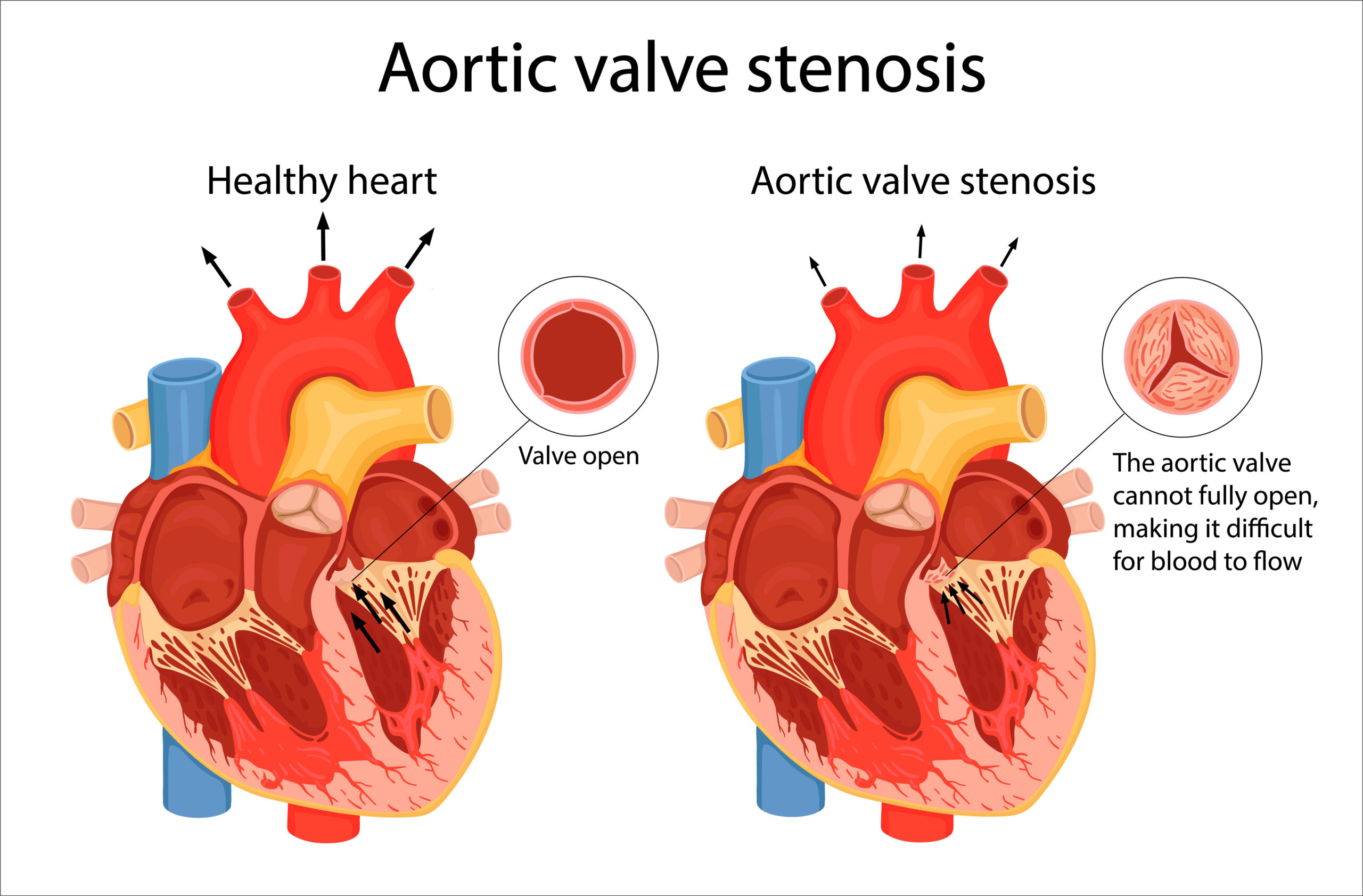
Symptoms of Aortic Stenosis (AS)
Chest pain
Rapid, fluttering heartbeat
Trouble breathing or feeling short of breath
Feeling dizzy or light-headed, even fainting
Difficulty walking short distances
Aortic stenosis can be caused by:
Calcific aortic stenosis: Calcium deposits narrow the valve. This is the most common cause and mostly affects older people.
Abnormal aortic or bicuspid valves: Calcium buildup happens sooner in people with these valves.
Rheumatic fever: This condition can develop after strep throat or scarlet fever.
Treatment for Aortic Stenosis (AS)
The definitive treatment for aortic stenosis is aortic valve replacement, either via a surgical or percutaneous approach. It depends on the severity of symptoms
Lifestyle changes.
Eating healthy, exercising regularly, and stopping smoking can improve heart health.
Medication
Medications can lower blood pressure and cholesterol.
Monitoring
People with mild cases or no symptoms may be monitored without treatment.
Surgical Management
A cardiac surgeon can replace the damaged valve with a mechanical or biological valve.
Balloon valvuloplasty
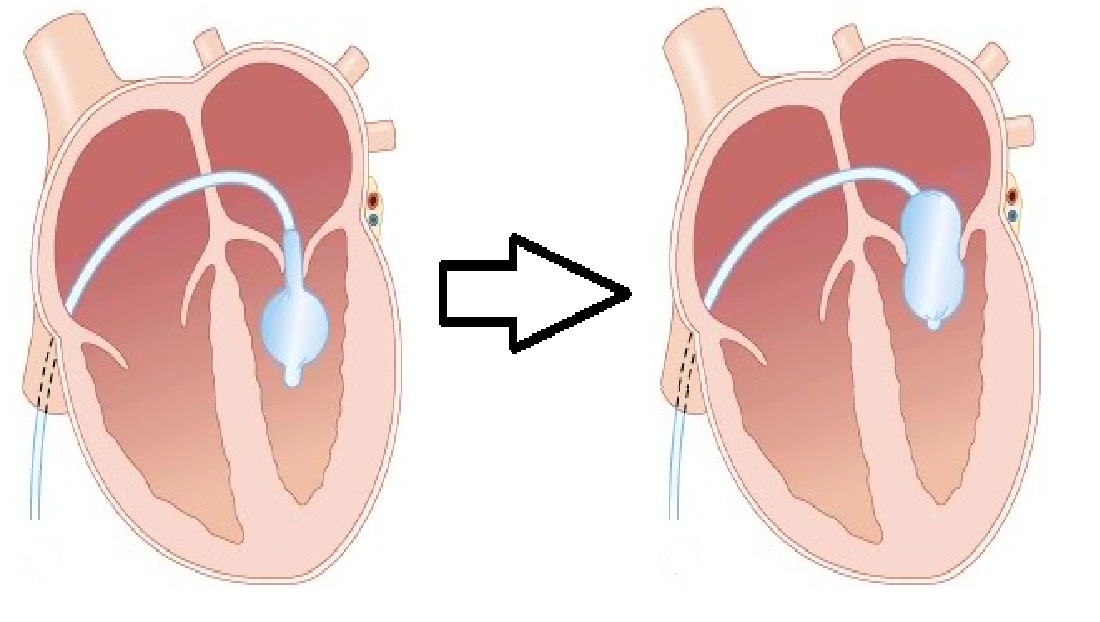
A catheter-based procedure that can improve symptoms when surgery isn’t an option.
Transcatheter aortic valve replacement (TAVR)
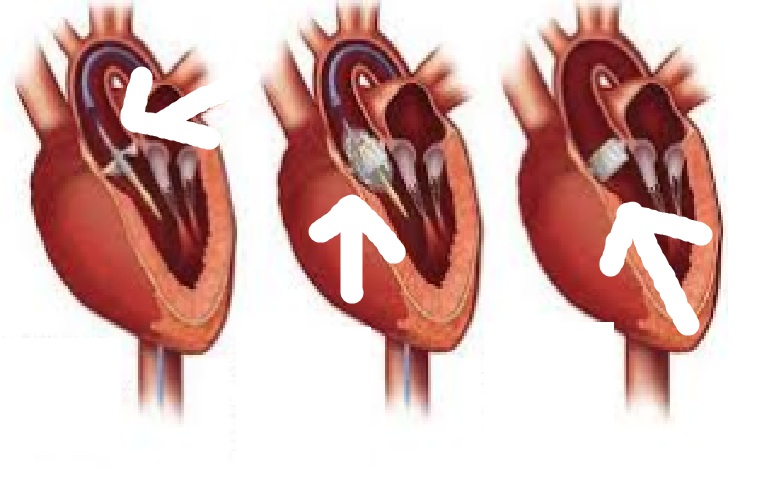
A nonsurgical procedure that’s becoming more common.
Non-invasive ultrasound therapy (NIUT)
A new technology that uses ultrasound pulses to soften calcified aortic leaflets.
Ross procedure
A more complicated surgery that involves transplanting the patient’s pulmonary valve and main pulmonary artery to the aortic position.
Other things to consider
People with mechanical valves need to take blood thinners for life.
Biological tissue valves break down over time and may need to be replaced.
In severe aortic stenosis, some standard cardiovascular medications may be contraindicated.
Having aortic stenosis can increase the risk of endocarditis, so daily dental care and checkups are important.
|
|
MS |
MR |
AR |
AS |
| Common
causes |
Rheumatic
fever |
Rheumatic fever
SBE(Sub-Acute Bacterial Endocarditis) Ruptured Papilla or chorda |
Rheumatic fever
SBE Syphilis Congestive cardiac failure |
Congestive cardiac failure
Calcification of leaflet Rheumatic fever |
| Symptoms | Dyspnea
Bronchitis Hemoptysis |
Dyspnea | Dizziness
Palpitation Dyspnea Angina |
Angina
Dyspnea Syncope Dizziness |
| Signs | Load S1
Opening Snap Mid-diagnosis murmur with presystolic accent |
Pansystolic
murmur Soft 1st 3rd sound at apex |
Early
diagnosis murmur LVH Peripheral signs |
Valvular:
Systolic thrill, murmur A2 soft Ejection click Supra-valvar : Bp >rt. Side No click. Sub-valvar AR murmur No click |
Facts can provoke
Not smoke or use tobacco
Eat a heart-healthy diet
Keep a healthy weight
Get regular exercise
Manage stress
Control blood pressure, blood sugar and cholesterol
Limit alcohol
Get good sleep
To reduce the Risk
Reducing salt and alcohol consumption
Quitting smoking
Losing weight
Avoiding strenuous activity
Getting enough sleep
Managing stress
Complications Common to all valvular disease
1. Arrhythmias.
2. Bacterial endocarditis
3. Cardiac failure
Also from compression in MR, MS
Hoarseness, dysphagia, collapse lung.
medlight2u.com
A light on Practice of Medicine (The information provided is for informational and educational purposes only and should not be considered professional advice)
- Sleeplessness (insomnia)
- Furuncle Nostril
- Presbyopia meaning “old eye”
- Oral cancer
- Gestational Trophoblastic Neoplasia (GTN)
Acne Acne vulgaris Acute Renal Failure Adrenal cortex Angina Angina Pectoris Aortic Regurgitation (AR) Aortic Stenosis (AS) Chest pain Chronic pyelonephritis Coarctation of Aorta Cough cyanosis Cystic acne Dehydration depression Diabetes Mellitus Diagnosis of Aortic Stenosis Dr.KTS DR K TAMILSELVAN Fatigue Heart Failure Hypertension Hypokalemia Hypothyroidism Ischemic Heart Disease LBBB Mitral Incompetence Mitral insufficiency Mitral valve prolapse Nocturia Patent Ductus Arteriosus PDA Polyuria Proteinuria pulmonary hypertension Pulmonary Stenosis ST Depression Symptoms of Acne Syncope Treatment for acne valvular heart disease Ventricular Septal Defect VSD Zits
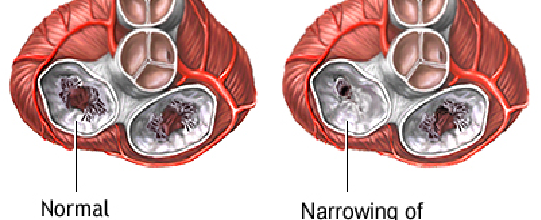

Leave a Reply